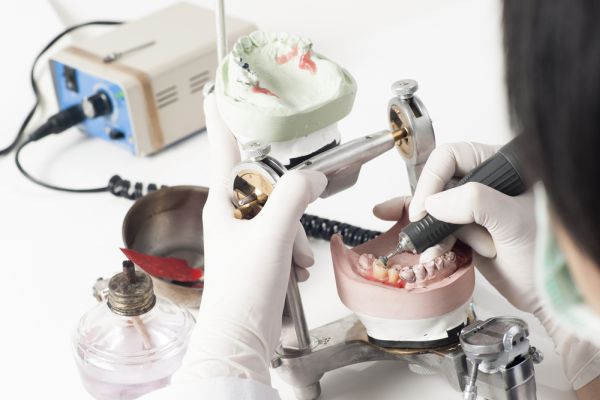What to Know About the Dental Crown Process

A dental crown is a protective cap a dentist places on the tooth to either mask physical impairments and improve its aesthetics or protect and restore the tooth’s function after significant structural damages. The process of getting a dental crown is simple, but there may be certain adjustments based on the patient’s preferences.
Getting a dental crown
Before getting a dental crown, the dentist will examine the teeth to know if a crown is necessary. Sometimes a tooth may be overly damaged to hold a crown. In other cases, additional treatment such a root canal may be required first.
During the initial consultation, the dentist will allow the patient to choose from different dental crown materials – typically metal, ceramic, amalgam, zirconia, porcelain-fused metal, and composite resin. All these materials have their advantages and drawbacks.
Placing the crown
The first process is to prepare the tooth for a crown. The dentist will start by numbing the tooth and surrounding tissues. This is not often needed, especially if the tooth has undergone a root canal to remove the nerves, but it makes the treatment more comfortable.
After applying local anesthesia, the dentist will use gingival retraction chords to separate the gums from the tooth. This is to prevent damages to the gum and allow them to trim the tooth enough. After using the retraction chords, the dental expert will start shaving down the tooth. The reason is that crowns are usually thick to ensure strength. The type of material to be used will determine how much trimming will be done on the teeth. Metal crowns are slightly thinner than porcelain crowns, which means less trimming is required.
The trimming will ensure that the crown fits appropriately. Often, they may need to build up the teeth, especially in cases of severe decay. The dentist will apply a filling material to ensure the tooth has enough structure to support the crown.
Taking an impression
After shaving down the tooth, the dentist will take an impression of the upper and lower teeth. This impression, along with the preferred color, will be forwarded to the dental lab where the lab technician will create the crown. The dentist may also use optical impression, where a camera will be used to scan the teeth to obtain digital information to produce a 3D dental crown.
Placing the crown
While the dental lab is making the permanent crown, the dentist will place a temporary crown (usually made from composite resin or metal) over the teeth to protect the area. The temporary crown is less strong and will be removed as soon as the permanent crown is ready.
Making a permanent crown takes about 10 days, after which the patient will return to the dental office. The dentist will remove the temporary crown and check the fit of the permanent crown. They will place the crown on the tooth and make any necessary adjustment until the fit is perfect. After that, the dentist will cement the crown into place.
Final note
Mild discomfort is common after getting a dental crown, but that should disappear in no time. If any issue arises, inform your dentist immediately.
Request an appointment here: https://www.mvpfamilydental.com or call MVP Family Dental at (215) 892-1438 for an appointment in our Jenkintown office.
Check out what others are saying about our services on Yelp: Read our Yelp reviews.
Related Posts
Patients missing one or more teeth may benefit from implant dentistry, which offers long-term replacement options. Continue reading to learn about replacing a single lost tooth with an implant. Implants are used to hold single crowns, bridges, or a whole set of teeth in place. Their application as fixed restorations, whether for single or multiple…
Implant dentistry involves teeth replacement with dental implants. One popular option within implant dentistry is an implant-supported bridge, which is ideal for replacing a section of missing teeth. The following review discusses everything you should know about an implant-supported bridge.Many are choosing implant dentistry for teeth replacement over a traditional fixed bridge and removable partial…
Implant dentistry involves the replacement of natural teeth after tooth loss occurs using titanium posts (known as dental implants) and the attachment of a restoration, such as a dental crown, dental bridge, or denture. A bone graft is often necessary before an implant dentistry procedure, particularly when there is not enough healthy bone inside the…
Implant dentistry is growing in popularity due to the unique benefits that it offers over other alternatives for multiple teeth replacement. The most commonly recommended treatment options for implant dentistry when replacing more than one tooth are implant-supported bridges and implant-supported dentures.This review discusses the primary types of implant dentistry options for patients seeking teeth…






